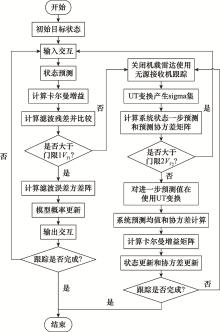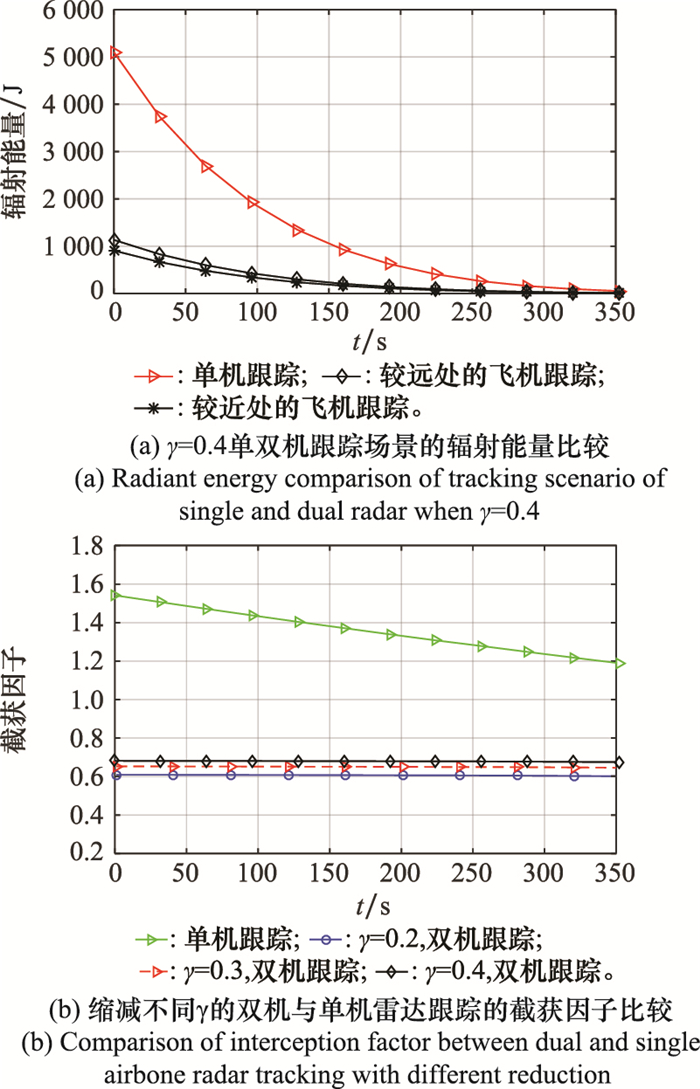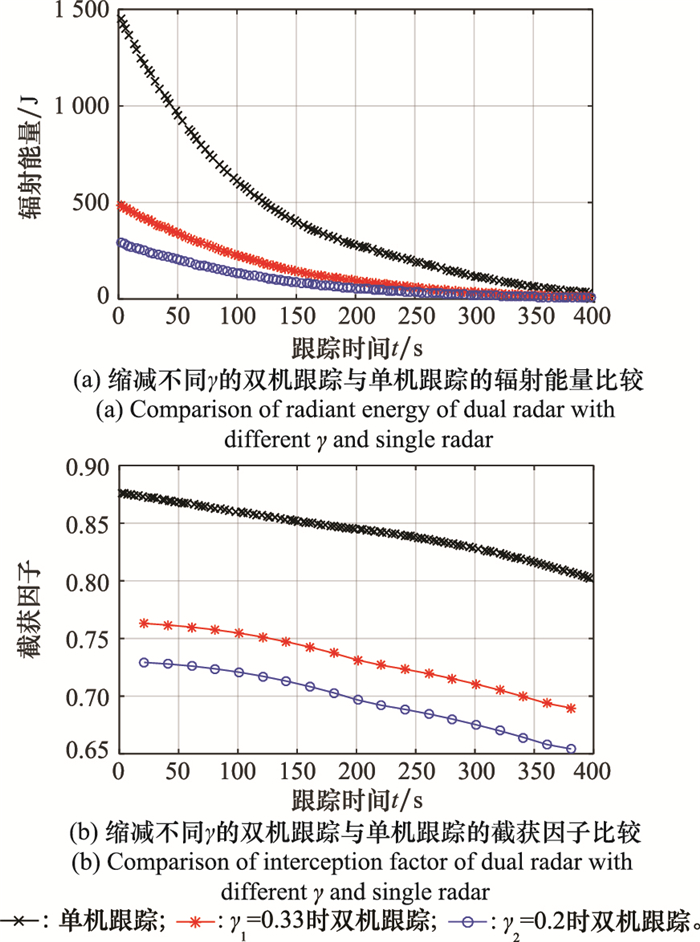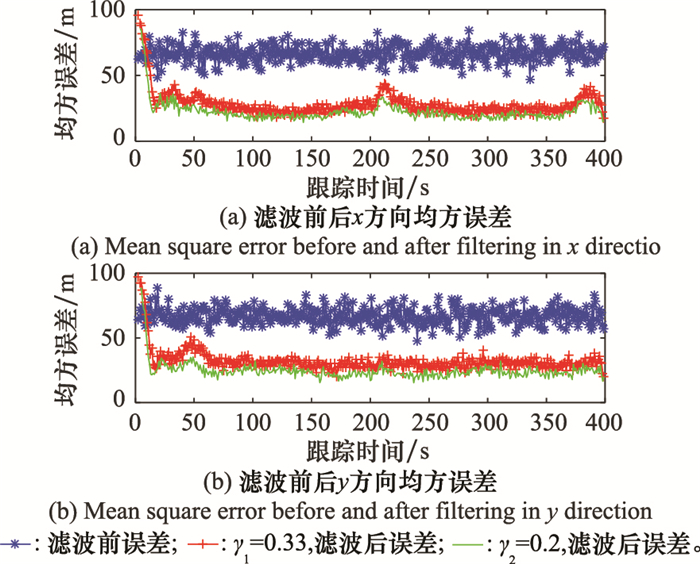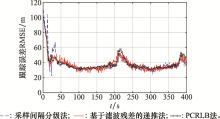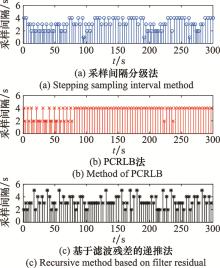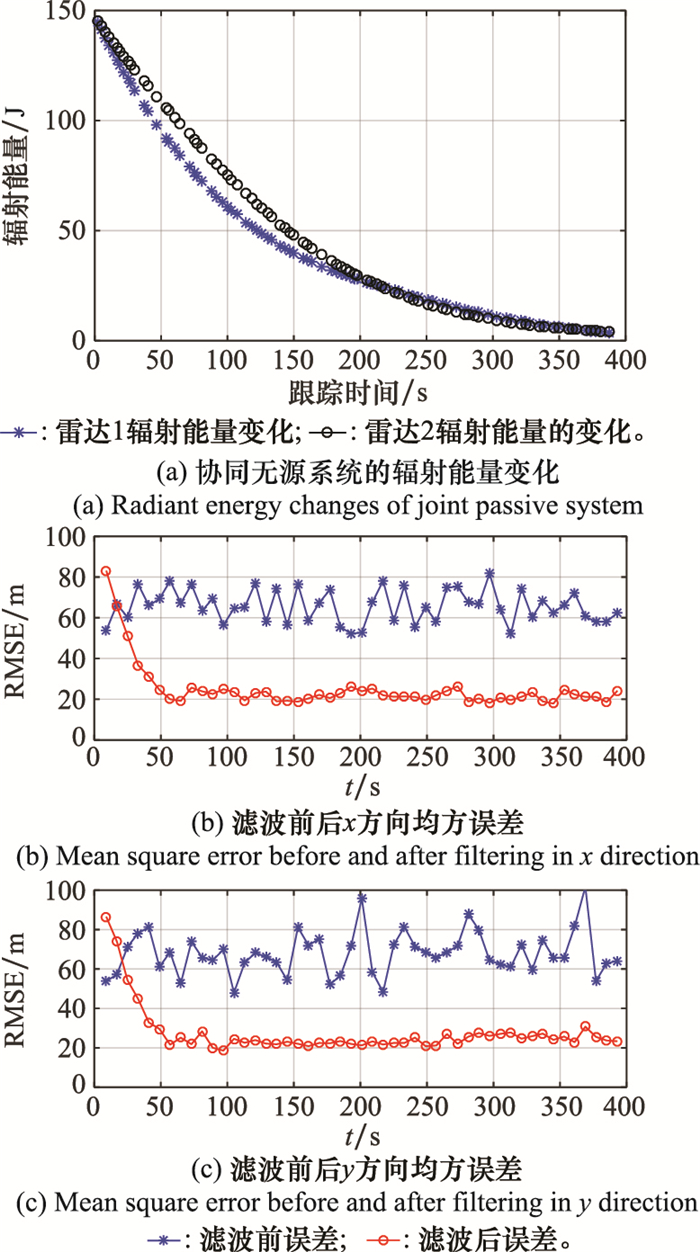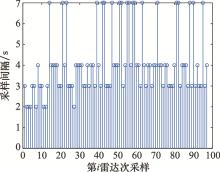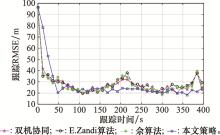Systems Engineering and Electronics ›› 2021, Vol. 43 ›› Issue (10): 2851-2859.doi: 10.12305/j.issn.1001-506X.2021.10.19
• Sensors and Signal Processing • Previous Articles Next Articles
Dual airborne radar joint target tracking method based on constraint of radiant energy reduction
Ping SUN1, Fei WANG1,*, Shanyue DOU1, Jianjiang ZHOU1, Jun CHEN2
- 1. Key Laboratory of Radar Imaging and Microwave Photonics Ministry of Education, Nanjing University of Aeronautics and Astronautics, Nanjing 211106, China
2. School of Electronic & Information Engineering, Nanjing University of Information Science & Technology, Nanjing 210044, China
-
Received:2020-08-07Online:2021-10-01Published:2021-11-04 -
Contact:Fei WANG
CLC Number:
Cite this article
Ping SUN, Fei WANG, Shanyue DOU, Jianjiang ZHOU, Jun CHEN. Dual airborne radar joint target tracking method based on constraint of radiant energy reduction[J]. Systems Engineering and Electronics, 2021, 43(10): 2851-2859.
share this article
Table 4
Tracking effect and tracking mean square error of different tracking algorithms"
| 对比算法 | 平均采样间隔/s | 跟踪ARMSE/m | 辐射总能量/J |
| 单机算法 | 3.05 | x方向: 37.62 | 5.1×104 |
| y方向: 43.40 | |||
| 双机协同 | 3.65 | x方向: 28.07 | 0.98×104 |
| y方向: 31.68 | |||
| Zandi算法 | 3.62 | x方向: 27.91 | 0.98×104 |
| y方向: 32.22 | |||
| 佘算法 | 3.61 | x方向: 28.01 | 1.05×104 |
| y方向: 31.63 | |||
| 本文 策略 | 4.20 | x方向: 26.54 | 0.88×104 |
| y方向: 27.59 |
| 1 | SHEN F, LI L, XU X, et al. Verification and analysis of electromagnetic environment based on Simulink[C]//Proc. of the IEEE Region Conference, 2017: 1054-1057. |
| 2 | LYNCH D . Introduction to RF stealth[M]. Raleigh: Sci Tech Publishing, 2004. |
| 3 | FORSYTHE K W, MOMTICCIOLO P, SKLAR J R. Spatial adaptive filtering for LPI signal detection[C]//Proc. of Tactical Communications Conference, 1994: 507-508. |
| 4 |
STOVE A G , HUME A L , BAKER C J . Low probability of intercept radar strategies[J]. IEEE Proceedings Radar, Sonar and Navigation, 2004, 151 (5): 249- 260.
doi: 10.1049/ip-rsn:20041056 |
| 5 | 杨红兵, 周建江, 汪飞, 等. 飞机射频隐身表征参量及其影响因素分析[J]. 航空学报, 2010, 31 (10): 2040- 2045. |
| YANG H B , ZHOU J J , WANG F , et al. Characterization parameters of warplane RF stealth and analysis of its affecting factors[J]. Acta Aeronautica Astronautica Sinica, 2004, 151 (5): 249- 260. | |
| 6 | TOCCA V, VIGILANTE D, TIMMONERI L, et al. Adaptive beamforming algorithms performance evaluation for active array radars[C]//Proc. of the IEEE Radar Conference, 2018: 43-48. |
| 7 | WANG S Q, HE P P. Research on low intercepting radar waveform based on LFM and barker code composite modulation[C]//Proc. of the International Conference on Sensor Networks and Signal Processing, 2018: 297-301. |
| 8 |
ZHANG Z K , ZHU J H , TIAN Y B , et al. Novel sensor selection strategy for LPI based on an improved IMMPF tracking method[J]. Journal of Systems Engineering and Electronics, 2014, 25 (6): 1004- 1010.
doi: 10.1109/JSEE.2014.00115 |
| 9 | SHI C G, ZHOU J J, WANG F. LPI based resource management for target tracking in distributed radar network[C]//Proc. of IEEE Radar Conference, 2016. |
| 10 | SELVI E, BUEHRER R M, MARTONE A, et al. On the use of markov decision processes in cognitive radar: an application to target tracking[C]//Proc. of IEEE Radar Conference, 2018: 537-542. |
| 11 |
LIU H Q , YU L , YANG H Y , et al. Self-adapting radiation control method for RFS in tracking[J]. Journal of Systems Engineering and Electronics, 2018, 29 (2): 244- 255.
doi: 10.21629/JSEE.2018.02.04 |
| 12 | 余思伟, 汪飞, 陈军. 目标跟踪过程的机载雷达能量控制算法[J]. 信息技术, 2020, 44 (7): 7- 11, 16. |
| YU S W , WANG F , CHEN J . Energy control algorithm of airborne radar in target tracking[J]. Information Technology, 2020, 44 (7): 7- 11, 16. | |
| 13 | GODTICH H, PETROPULU A, POOR H V. Optimal power allocation in distributed multiple radar configurations[C]//Proc. of IEEE International Conference on Acoustics, 2011: 2492-2495. |
| 14 | ANDARGOLI H S M, MALEZADEH J. Target assignment and power allocation for LPI radar networks[C]//Proc. of the International Symposium on Artificial Intelligence and Signal Processing, 2015: 234-239. |
| 15 | ZANDI E, ALIREZAEI G, MATHAR R. Power allocation for multi-target sensor networks[C]//Proc. of the IEEE International Conference on Wireless for Space and Extreme Environments, 2016: 13-18. |
| 16 |
SHE J , ZHOU J J , WANG F , et al. LPI optimization framework for radar network based on minimum mean square error estimation[J]. Entropy, 2017, 19 (8): 397- 413.
doi: 10.3390/e19080397 |
| 17 | SHE J , WANG F , ZHOU J J . Power allocation and sensor assignment in LPI radar network for multiple target tracking[J]. ICIC Express Letters, 2016, 10 (12): 2787- 2792. |
| 18 | 佘季. 基于射频隐身的机载雷达组网多目标跟踪参数优化控制[D]. 南京: 南京航空航天大学, 2018. |
| SHE J. Parameter optimization control of airborne radar network for multiple targets tracking based on radio frequency stealth[D]. Nanjing: Nanjing University of Aeronautics and Astronautics, 2018. | |
| 19 | LU Y X, HE Z S, CHENG Z Y, et al. Adaptive resource allocation in decentralized colocated MIMO radar network for multiple targets tracking[C]//Proc. of the IEEE Radar Confe-rence, 2018: 152-157. |
| 20 | LI X, CHENG T, TAN Q Q. Joint time-space resource allocation and waveform selection for the collocated MIMO radar in multiple targets tracking[C]//Proc. of the International Conference on Control, Automation and Information Sciences, 2019. |
| 21 | NORTH D O. An analysis of the factors which determine signal/noise discrimination in pulsed-carrier systems[C]//Proc. of the IEEE, 1963, 51(7): 1016-1027. |
| 22 | GROSSI E, LOPS M, VENTURINO L. Detection rate optimization for Swerling 0, I, and Ⅲ target models[C]//Proc. of the IEEE Radar Conference, 2017: 606-609. |
| 23 | 吴小坡, 时家明, 莫正攀, 等. 双基地雷达对隐身目标探测区域的计算[J]. 现代防御技术, 2012, 40 (4): 123- 127. |
| WU X P , SHI J M , MO Z P , et al. Calculation of detection coverage of bistatic radar against stealth target[J]. Modern Defence Technology, 2012, 40 (4): 123- 127. | |
| 24 | CAO L Y, HE K F. Time resource scheduling algorithm for multiple target tracking in jamming[C]//Proc. of the IET International Radar Conference, 2013. |
| 25 |
CHAVALI P , NEHORAI A . Scheduling and power allocation in a cognitive radar network for multiple-target tracking[J]. IEEE Trans.on Signal Processing, 2012, 60 (2): 715- 729.
doi: 10.1109/TSP.2011.2174989 |
| 26 | 张贞凯, 周建江, 汪飞, 等. 基于射频隐身的相控阵雷达功率控制算法[J]. 系统工程与电子技术, 2012, 34 (11): 2244- 2248. |
| ZHANG Z K , ZHOU J J , WANG F , et al. Novel algorithm of power control based on radio frequency stealth[J]. Systems Engineering Electronics, 2012, 34 (11): 2244- 2248. | |
| 27 | 程婷, 何子述, 唐婷. 相控阵雷达自适应周期算法研究[J]. 西安电子科技大学学报(自然科学版), 2007, 34 (sup): 116- 119. |
| CHENG T , HE Z S , TANG T . Research on adaptive update interval algorithm in phased radars[J]. Journal of Xidian university, 2007, 34 (sup): 116- 119. | |
| 28 | LU J B, HU W D, YU W X. Adaptive beam scheduling algorithm for an agile beam radar in multi-target tracking[C]//Proc. of the CIE International Conference on Radar, 2006. |
| 29 | BAO T T, ZHANG Z K, SABALI M F. An improved radar and infrared sensor tracking fusion algorithm based on IMM-UKF[C]//Proc. of the IEEE 16th International Conference on Networking, Sensing and Control, 2019: 420-423. |
| [1] | Zhuling QIU, Yufei ZHA, Zhenyu LI, Yuming LI, Peng ZHANG, Chuan ZHU. Temporal regularized correlation filter tracking algorithm based on multi-model distillation [J]. Systems Engineering and Electronics, 2022, 44(8): 2448-2456. |
| [2] | Zilin HOU, Ting CHENG, Han PENG. GMPHD based on measurement conversion sequential filtering for maneuvering target tracking [J]. Systems Engineering and Electronics, 2022, 44(8): 2474-2482. |
| [3] | Yuanyi XIONG, Wenchong XIE. Adaptive iterative monopulse estimation method based on space-time constraint [J]. Systems Engineering and Electronics, 2022, 44(8): 2506-2514. |
| [4] | Haoran SHI, Faxing LU, Jiangxin QI, Guang YANG. Cooperative target tracking of UAVs based on aided beacon [J]. Systems Engineering and Electronics, 2022, 44(7): 2302-2310. |
| [5] | Shuai WANG, Jianjun XIANG, Fang PENG, Shujuan TANG. Target tracking algorithm based on a new steepest descent method [J]. Systems Engineering and Electronics, 2022, 44(5): 1512-1519. |
| [6] | Huaisheng XIN, Chen CAO. Interacting multiple model based grouping δ-generalized labeledmulti-Bernoulli algorithm [J]. Systems Engineering and Electronics, 2022, 44(4): 1128-1138. |
| [7] | Jiahao XIE, Shucai HUANG, Daozhi WEI, Zhaoyu ZHANG, Wenhao WANG. Solution for uncertain hybrid multi-sensor alliance based on PEV principle [J]. Systems Engineering and Electronics, 2022, 44(3): 819-826. |
| [8] | Zizhuang SONG, Jiawei YANG, Dongfang ZHANG, Shiqiang WANG, Shuo ZHANG. Real-time infrared multi-class multi-target anchor-free tracking network [J]. Systems Engineering and Electronics, 2022, 44(2): 401-409. |
| [9] | Huaisheng XIN, Penghan SONG, Chen CAO. Multiple model based generalized labeled multi-Bernoulli filter [J]. Systems Engineering and Electronics, 2022, 44(12): 3603-3613. |
| [10] | Haonan LIU, Liping SONG. Group structure update model and group target tracking algorithm based on kernel Fisher discriminant [J]. Systems Engineering and Electronics, 2022, 44(10): 3012-3019. |
| [11] | Cheng FANG, Wen LU, Jingying JI, Yumeng SONG, Feifei LIANG, Zhiwei LUO. Correlation filter-tracking algorithm based on appearance similarity update [J]. Systems Engineering and Electronics, 2022, 44(1): 117-126. |
| [12] | Yuexin ZHAO, Wangdong QI, Peng LIU, En YUAN, Bing XU. Quadratic constraint Kalman filter algorithm for three dimensional AoA target tracking [J]. Systems Engineering and Electronics, 2021, 43(8): 2263-2272. |
| [13] | Chenguang SHI, Jing DONG, Jianjiang ZHOU, Fei WANG. Overview of aircraft radio frequency stealth technology [J]. Systems Engineering and Electronics, 2021, 43(6): 1452-1467. |
| [14] | Mingjie SUN, Lin ZHOU, Jinling GU, Peigeng LI. Infrared target tracking algorithm based on multi-domain network [J]. Systems Engineering and Electronics, 2021, 43(5): 1176-1183. |
| [15] | Yu LU, Haibin WANG. Maneuvering target tracking algorithm for airborne passive coherent localization system [J]. Systems Engineering and Electronics, 2021, 43(4): 875-882. |
| Viewed | ||||||
|
Full text |
|
|||||
|
Abstract |
|
|||||
